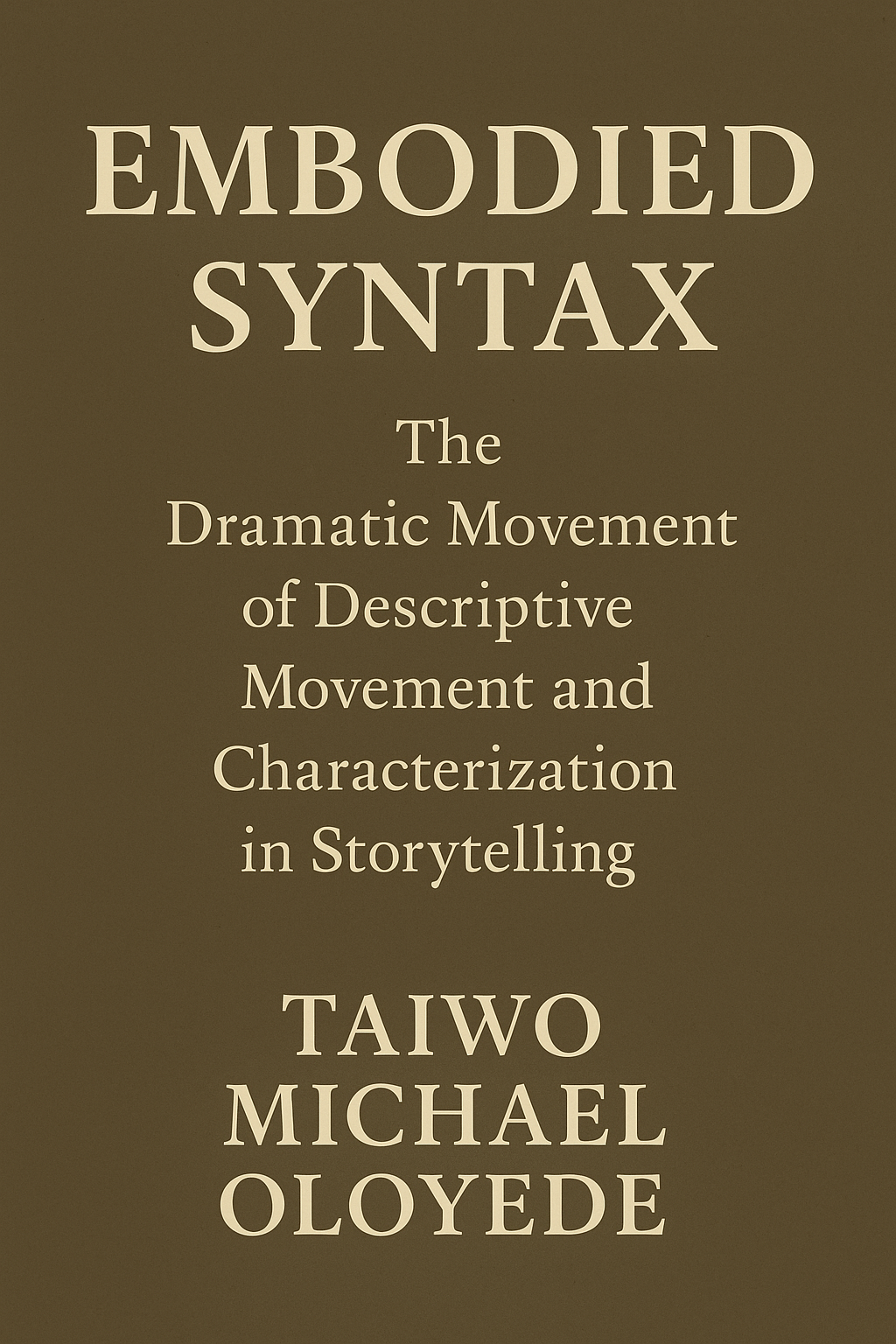by Taiwo Michael Oloyede
In the framework of storytelling, drama does not unfold solely in what characters say, but in how they move, what they inhabit, and the weight their bodies bear through space and time. The dramatic movement of descriptive movement—gestures, posture, pace, stillness—extends beyond stage directions. It belongs deeply to characterization and to the unspoken grammar of conflict. Together, movement and description form the unsung music of drama: they render atmosphere kinetic, transform language into action, and make characters legible even in their silence.
Characterization, in its richest dramatic sense, is not a function of monologue alone. As Bertolt Brecht insists, the actor’s body must “reveal the world” through its actions, not just internalize it. In Mother Courage and Her Children (1939), Mother Courage’s constant wheeling of the cart becomes her moral signature. It is not merely a prop but an extension of her worldview—capitalist, mobile, unyielding. Descriptive movement in this case articulates ideology. Her body, yoked to survival, communicates volumes before she speaks.
In classical traditions, we find equally significant uses of descriptive movement. In Sophocles’ Oedipus Rex, the protagonist’s final act of blinding himself is not merely a grotesque spectacle; it is character distilled into gesture. Oedipus’ horror, his inner transformation, and his epistemological anguish are all externalized in that single act of self-punishment. The gesture ruptures the boundary between seeing and knowing, between fate and agency. The dramatic intensity of that moment emerges from the interplay between the symbolic action and its psychological reverberation.
It is not only in tragedy that this movement is profound. In Harold Pinter’s The Dumb Waiter, silence and stasis become a kind of choreography of tension. Gus and Ben’s seemingly innocuous movements—repeating questions, folding papers, adjusting ties—form a pattern of nervous energy and dislocated agency. Their bodies perform the anxiety of waiting, the incomprehensibility of authority. In Pinter’s work, characters are sculpted as much by what they withhold as what they perform; movement is sparse but loaded with threat.
A similar sensibility is evident in African dramatic traditions, particularly in the plays of Wole Soyinka. In Death and the King’s Horseman (1975), the dramatic movement is deeply ritualistic. Elesin’s dances and pauses—his momentary refusal to complete his ritual suicide—are steeped in cosmological resonance. His hesitation, described in richly symbolic terms, becomes the crux of the drama. Movement here is not linear or psychological but metaphysical. It is through descriptive movement that the tension between colonial law and Yoruba spirituality is embodied. What Elesin does not do becomes louder than any dialogue.
This brings us to the poetics of descriptive movement in storytelling: how motion becomes metaphor. In literary narratives, this appears vividly in the prose of Toni Morrison. In Beloved (1987), Sethe’s bodily gestures—her clenched jaw, her careful handling of Baby Suggs’ food, the way she carries Denver—are descriptions that are not ornamental but declarative. They shape her character and illuminate the trauma encoded in the body. Morrison uses descriptive movement as a repository of memory, an archive of unspeakable history. One could argue that Sethe’s body is the text through which the novel reads itself.
What these examples reveal is a dramaturgy of movement that resists reductive interpretation. Descriptive movement is not simply theatrical realism or symbolic action. It is an articulation of interiority, shaped by history, culture, and narrative pace. In performance, as in prose, it must be choreographed not for flourish but for resonance.
In educational contexts, the integration of descriptive movement in storytelling allows for a broader understanding of character psychology. Konstantin Stanislavski, in his method of physical actions, underscores this connection. He writes: “The character lives in the body.” To teach drama without an attention to descriptive movement is to amputate characterization from its most organic expression. It is through walking patterns, spatial relationships, hand gestures, and breath that actors give life to subtext. In playwriting, similar dynamics hold: the writer must imagine the body in space, not just the word on the page.
One may also look to contemporary performance art to see this principle distilled into radical expression. In the works of South African theatre-makers like Brett Bailey, descriptive movement becomes a tool of postcolonial reckoning. In Exhibit B, black bodies are staged in museum-like tableaux, their stillness interrupting the viewer’s gaze. The lack of motion becomes a commentary on objectification; it invites discomfort, demands re-interpretation. Here, the absence of descriptive movement becomes movement in itself—a profound inversion.
In sum, the dramatic movement of descriptive movement in storytelling is not a peripheral aesthetic choice. It is a central narrative strategy. It animates character, deepens atmosphere, and encodes ideology in the body. As critics and practitioners, we must train our eyes not only on what is said, but on what is done—and undone—through motion. The storyteller’s canvas is never still; even silence walks.
Taiwo Michael Oloyede
Poet, Cultural Producer, Actor, and Art Critic




